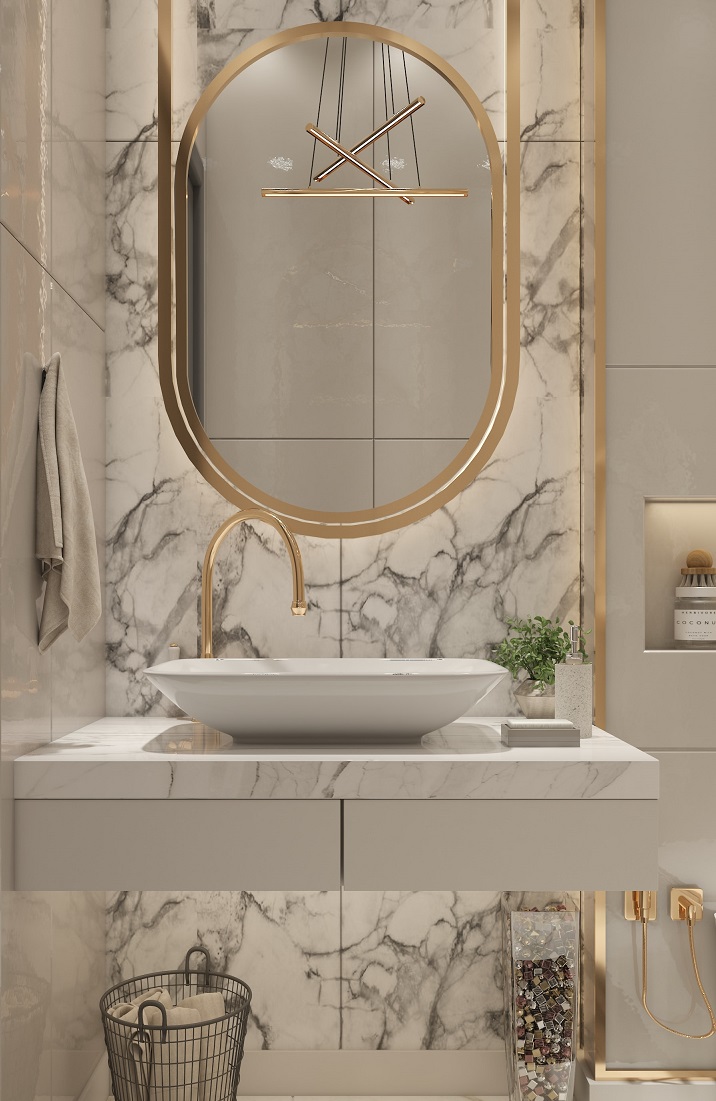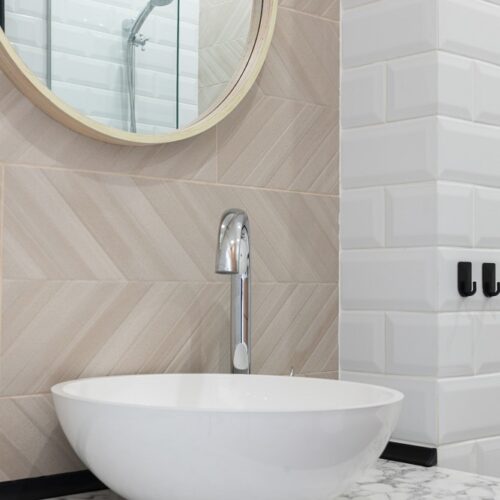
What is marble?
Marble has been used by master craftsmen over many centuries to adorn the floors, walls and ceilings of palatial buildings. Historically it has been a symbol of wealth, however nowadays though still considered luxury, the material is a more accessible feature for any home. It is particularly sought after for bathrooms the world over, where it’s beauty shines, providing a quality, high end look to the discerning home owner.
The thing about genuine marble is that every piece is different. A white marble is calcite based, a cream marble is dolomite based, and a green tinged marble is serpentine based. When marble is veined with colours, these streaks are caused by mineral content and impurities in the soil. You will often find the most high-end marble has an even colour palette with soft veining which is highly desirable for large areas, such as the shower walls.
How marble can be used in a bathroom
A lot of thought has to go into planning a perfect bathroom. There are many decisions to be made, but if you have made up your mind about using marble, the good news is that it is very easy to work with. It is a softer stone than say granite and consequently can be milled, machined and tumbled, giving it a variety of uses. Bathrooms may feature marble in the shower, walls, floors or forming the top of a vanity unit. It can come in large slabs or be laid in a pattern such as herringbone. A shiny marble floor will be more slippery so it is advisable to use mats underfoot. A trip to a bathroom showroom can help guide your decision on whether marble is the right choice for you. It also gives you the opportunity to see the different marble finishes in person to make a better decision.
Is marble a high maintenance material?
Whilst marble may not be the best choice for a kitchen worktop, because it’s a softer stone than say, granite, and prone to be absorbent to cooking spills, marble makes perfect polished flooring and bathroom tiling.
In a kitchen, the acidic properties of vinegar and lemon juice can damage marble, but as long as you avoid cleaning substances that contain these acids, the marble in a bathroom shouldn’t be harmed. Just beware of substances like hair dye that can stain your marble shower or vanity. You may consider pairing marble with another material such as porcelain on the floor of your shower. If you are still in two minds, check out this article from one family’s perspective about using marble in their shower.
How to protect marble
Whether your marble is honed or polished, it is always advisable to seal it every few months with a quality sealer and keep on top of the maintainence. Special cleaners for marble should be used – as mentioned above, nothing acid based which could damage the sealer and marble. Keeping on top of the cleaning with soap and water, a cloth and plastic brush should be sufficient! A highly polished marble will be more resistant to water damage than a more matt, natural marble finish.
© Copyright 2022 Antonia, All rights Reserved. Written For: Tidylife


Leave a Reply